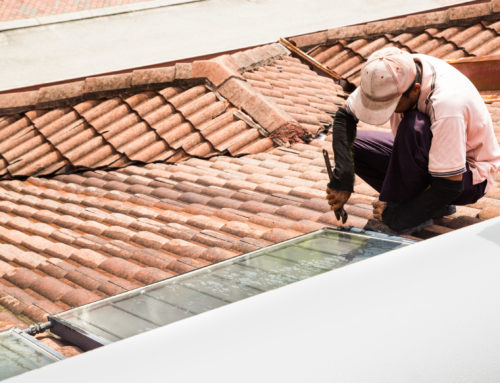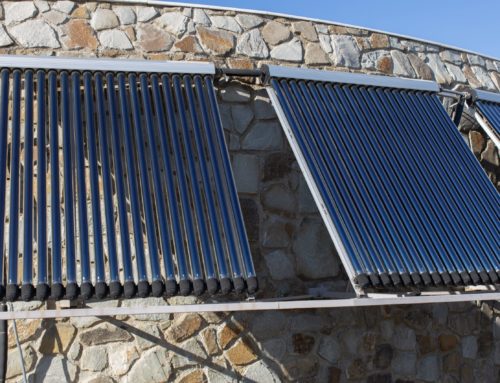 What are solar tubes?
What are solar tubes?
Solar tubes are small sun tunnels that bring natural light into your house. It channels the sun’s light hitting your roof and lets it shine anywhere in the home. Solar tube lighting is similar to a traditional skylight. Both let sunlight in and require proper installation to work well. However, a skylight tube is easier to manage because it is much smaller. Their sizes depend on your needs, but they generally come between 10 and 22 inches wide.
A solar tube skylight system can work with multiple individual units to enhance the natural daylight coming into your home. When you have multiple mounted skylights on a ceiling, each solar tube lights any interior room with direct sunlight. Without electricity or some other power source, one might think you’d be left with a dark room. But there are more ways to add light to domestic settings. Residential skylights have been adding light for years, and solar lighting through a reflective tube is just the latest in solar lighting developments.
Do solar tubes really work?
Absolutely! Solar tube lights are an excellent source of energy. You see, the whole point of other indoor lighting methods, such as candlelight or electric lamps, is to prevent houses from becoming dark when people are awake. Solar light can’t penetrate through your ceiling directly, and that’s where tube light comes in.
A solar light tube 10 inches around provides as much natural sunlight as three 100 watt bulbs. That’s pretty bright! A single sun tube can compete with artificial light sources and provide enough light to fill a living room.
What are the benefits of having solar tubes?
Solar tubes provide clean, beautiful light that brightens any setting. How a room looks can affect your feelings and mood. While indoor lighting still provides a fair bit of light, the color just isn’t the same as being outdoors. But solar tubing brings the sunlight right to you, wherever you are! The room’s feel changes as the sun shines through it. It’s impossible to beat the sun’s rays because of how warm and beautiful they are. They make everything sparkle with a yellow glow. Even if you can’t always be outdoors, solar tubing lets you experience the color and glow of sunlight wherever you might be.
It also means that your house’s lighting won’t have to rely completely on electricity or other light sources. It won’t even need a solar battery charger because it relies on sunlight, not energy converted into electricity. Granted, you should still have electric lighting for cloudy days and nighttime activities. But having the sun’s light on throughout the day can be a huge blessing when trying to cut electric bills.
Plus, some people are more sensitive to electric lighting, and having a natural option helps out. With the scramble for limited fuel resources and the health difficulties related to some methods of producing electricity, it can be nice to step away from it all and use natural, healthy solar energy to light your home.
There are also monetary benefits to consider. An electric lamp is spending money for every minute it shines, but you don’t have to pay the sun anything. There are cloudy days and long nights sometimes, but you can let the sun’s massive resources help shoulder the burden of lighting costs. You don’t have to pay anyone a regular utility bill for getting natural sunlight into your home. After it’s installed, that’s it. You’ve got it for as long as you live in that home. The financial independence to step away from high utility bills is one of the biggest advantages solar lighting provides.
On top of that, there are even some awesome health benefits to indoor solar lighting. The more sunlight you have, the extra exposure to Vitamin D you enjoy. Getting enough sunlight every day has been linked to improved mood and a better immune system. It also helps those affected by Seasonal Affective Disorder (or SAD) by bringing sunlight to them. By inviting sunshine into your home, you bring much more than just light. You also welcome happiness and clean energy.
Where should you place solar tubes?
Solar tubing works best on an even surface but not on a completely flat roof. It helps to have an incline between 14 and 60 degrees if you want optimum performance from your solar tube model. Be sure to check what kind of roof your solar tubes are optimized for. Most manufacturers assume that your roof has asphalt shingles These are an extremely common roofing material, but yours may vary. There are still plenty of easy ways to adapt for wood, metal, and tile roofs. You can even install solar shingles to reduce your carbon footprint even more.
Solar tubes should be placed by a professional. Because of how difficult they are to install, and because you can risk voiding your roof’s warranty if you put it in the wrong place, it’s best to trust someone with experience to help you out with solar tube installation. Experts will find a place in your home where the roof is relatively smooth, or at least not bumpy. It needs to be inclined because sunlight will be entering the tube at an angle. Let the installers know if you have anything else attached there, such as solar roof vents, so they know how to avoid obstructions.
There also needs to be enough attic space underneath the tube to funnel sunlight to the desired area. Solar tubes let sunlight reflect off the interior of the tube until it reaches the bottom. This design allows for an even distribution of sunlight and also helps block harmful UV rays. However you angle it in the attic, it needs enough space to properly bend and channel the light downwards. Ensure your attic is free of pests, mold, and other problems that could damage the solar tunnel. Seal the caps properly to prevent moisture from entering the unit. These steps, as well as other considerations, are the reason why it’s recommended you hire an expert to help you out. Once the installation is finished, you’ll have plenty of light to help you for a long time. When it’s set up in the right location, your solar tunnel should be good to go!
What are the most trusted solar tube brands?
One of the highest-rated brands on the market is the VELUX Sun Tunnel. The VELUX combines good quality with good savings. They’re extremely durable and reliable. Their surfaces are 99% reflective and conserve almost all sunlight as it spreads through the tunnel. Additionally, the VELUX also has a streamlined, simple design that allows for easy installation and optimal performance. It also strikes an amazing aesthetic. It can run on the expensive side, but its benefits are worth the investment.
There’s also the Natural Light Energy Systems solar tunnel. It’s a 13 inch solar light aperture that packs the equivalent of 500 watts to a 300 square foot space. Its interior is extremely reflective, and the device is fairly easy to install. The Natural Light model also features fiberglass construction for sturdy, reflective use all day long. It’s cheaper than the VELUX, but not quite as versatile: it doesn’t do so well on slanted roofs, so keep an eye out for that.
If you don’t mind undertaking more effort for installation, there’s always the ODL Tubular Skylight. These units require a fair bit of assembly, but they’re still a great choice for professional or personal installation. Their design is very well done; their acrylic domes and shiny exterior look great in any setting. The ODL Tubular Skylight is praised for its quality and the extra measures it takes to block UV light from entering your house. It grants the advantages of sunlight without letting in harmful radiation. They also last a very long time and are sure to light your home for years to come.
For a more flexible model, consider looking into the Kennedy Skylights Flex Tubular Skylight. It has a curved form that gently squeezes past any attic obstacle. Its diffuser is great at scattering sunshine throughout the interior, allowing for an even spread once it enters your home. If you can afford the Flex fetches’ extra price, it’s a reasonable consideration for endurance, flexibility, and functionality.
How much do solar tubes cost?
For professional installation, the average solar tube will cost about $750. That price includes materials and installation. The cost is cheaper than skylights, which can take up to three times as much money. Granted, this option is if you hire someone to do it; there’s still the option for installing it yourself. It’ll only take about $300 for a DIY solar kit for the confident, capable homeowner.
Solar tunnels will save you hundreds or even thousands of dollars over their lifetime. When you aren’t using electricity, the solar lights will still operate just fine. They also help you assert your independence; you won’t have to rely on anyone else for your lighting needs. So long as your home can support it, solar tunnels will light up whenever the sun is out.

